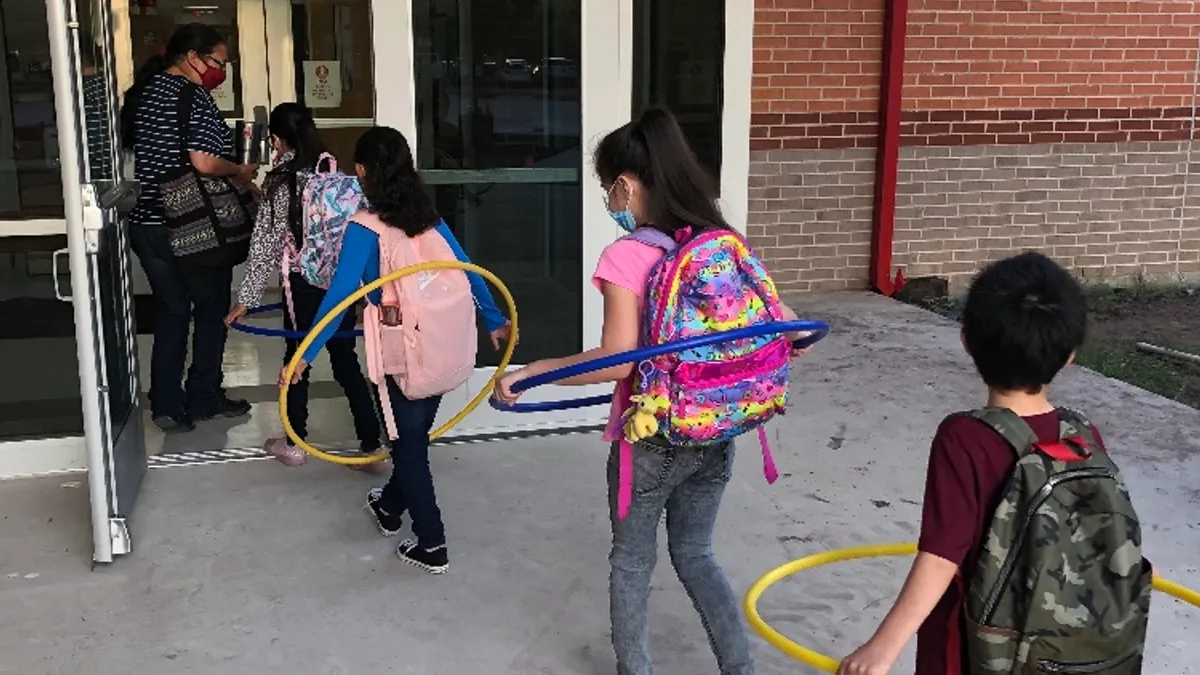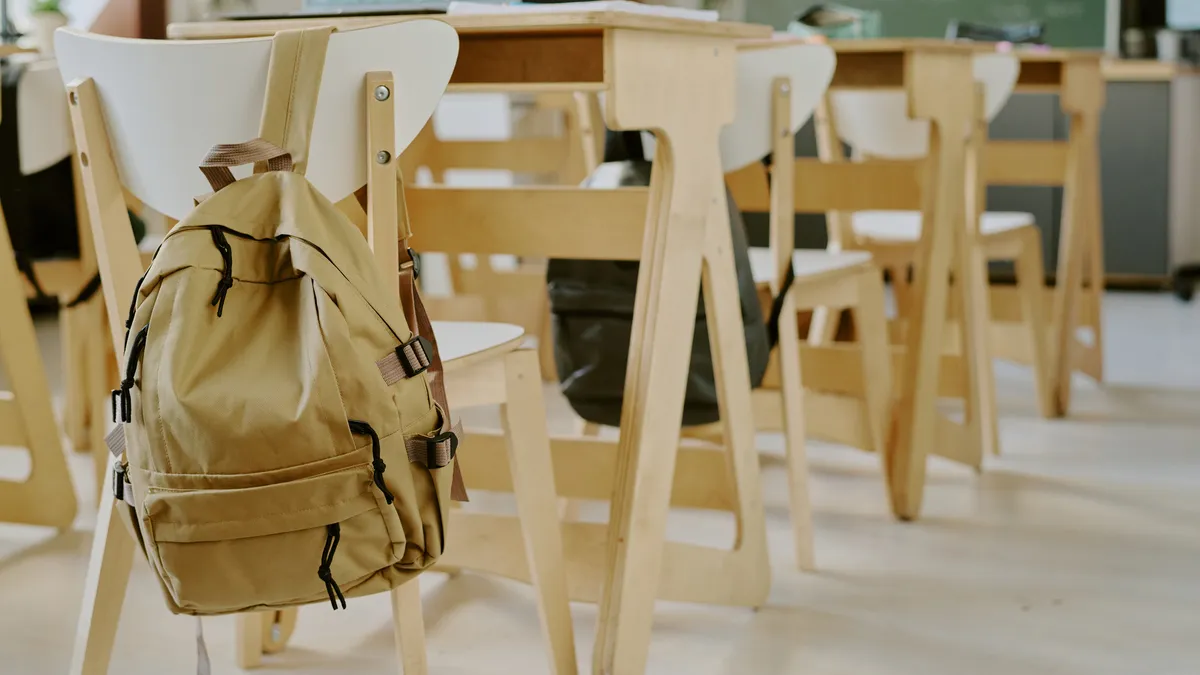Delayed openings in many districts mean students and their families may have only a few days or weeks of the new school year in the books. Already, parent, teacher and administrator frustration is understandably widespread due to the unpredictability of the pandemic and the forced change to traditional education.
The interruption of classroom instruction has been particularly difficult for specific student populations, such as English Language Learners (ELLs). Early in the pandemic, administrators at the Batavia City School District in western New York found many of their ELL families were uncomfortable with virtual learning. Communication with these students was as much about building relationships as it was notifications on instruction.
“We think they are fearful of what the internet is and what it can do. Because they don’t understand it, they don’t want to be a part of it,” said Molly Corey, the district’s executive director of curriculum and instruction. “We had some families say they don’t want their kids to participate in virtual learning. We’re part of a consortium specific to ELLs, and that’s been pretty common across the board.”
Batavia serves just over 2,000 students, of which 59 are enrolled in the ELL program. Those students represent eight languages: Spanish, Chinese, Ukrainian, Korean, Japanese, Creole, Vietnamese and Filipino. Batavia opened after Labor Day with a hybrid model, though some students with specific needs are in-person five days a week.
Cultural differences in the acceptance of and access to technology is only part of the challenge for ELL families nationwide. Language barriers make it difficult to share information. Hiring telephone interpreters to facilitate calls has alleviated some of the communication barriers, but the service can be pricey. As a result, school districts are getting creative in the ways they are reaching out and building relationships with English language learners and their families.
Fighting phone call fatigue
Nothing replaces the relationship of face-to-face interactions with parents, but when in-person gatherings were suspended, school leaders knew increasing communication with ELL families was crucial.
By the end of the 2019-20 school year, about 2,000 of 22,000 English Language Learners in Texas' Austin Independent School District had stopped attending class and/or the family had not responded to communication efforts. The urban district serves more than 80,000 students and has reopened remotely with plans to resume in-person instruction Oct. 6.
“We collectively made more than 2,000 phone calls in addition to [those] class teachers and campus staff made to make sure we heard from everyone,” said Leonor Vargas, administrative supervisor of the district’s Parent Engagement Support Office.
ELL students in Austin speak more than 100 different languages. Spanish is the most common language, alongside Arabic, Vietnamese, Swahili, Burmese, Dari and Pashto.
While phone calls provide a personal connection, the volume of calls and emails can be overwhelming. Teachers in Batavia, for example, quickly recognized families were being inundated with multiple phone calls — one from the classroom teacher, another from the ENL teacher and sometimes a third from an administrator — for each child. Families with more than one child in school were receiving that volume of communication for each student.
“Our ENL teachers are a really tight group,” said Corey. “They worked together on who would be the best contact for different families to try to eliminate multiple calls as a barrier, so the families were comfortable.”
Vargas and Corey both found creating or sharing videos produced in the student’s native language has been helpful in their districts. Corey relies on video translations shared through the consortium Batavia belongs to. Vargas moderates a Facebook group for Spanish-speaking families and has used the platform to stream live workshops that are saved for later viewing.
“Because a lot of our families use Facebook, it has been a good place to conduct workshops on how to use our learning management system, make requests and have other questions answered,” Vargas said.
Bridging the communication gap
Email, phone and social media are the go-to platforms for disseminating rapidly changing information. But for families of ELL students, old-school communication tactics have proved to be instrumental in connecting with families who had lost touch with the Austin Independent School District.
“The personal phone call from our teachers and administrators has been one of the most effective tools, but there is no one channel of communication that we could reach every student with,” said David Kauffman, executive director of multilingual education at Austin ISD. “Good old mail worked for reaching some of our families.”
Recognizing they were missing a portion of students, Austin ISD leveraged existing partnerships with local radio and television stations they knew their families viewed as entertainment. Those organizations shared district messages in their native language. Relying on previously established community relationships with the city and county health department and faith-based organizations have enabled the district to reach families in ways most convenient to them.
“We also held conversation circles to engage in dialogue with the families, asking what they needed for support,” said Vargas. “With that information, we could strategize and address concerns.”
The silver lining
As hard as it is to adapt to change, disruption to the “normal” education model has encouraged some positives. Before COVID-19, the Los Angeles Unified School District (LAUSD) regularly held town hall meetings to discover what concerns or needs ELL families had. However, participation was limited.
“Since going virtual, we have been engaging more families and getting more participation,” said Tony Aguilar, the chief of special education, equity and access for LAUSD. “It’s giving us ideas on how to best provide ongoing communication and how to tailor that.”
As the largest public school district in California, LAUSD serves more than 700,000 students, 20% of whom are ELLs, according to Aguilar. Nearly 100 languages are spoken within the district’s 1,400 schools. This fall, the district is fully remote.
“There are challenges to measuring the quality of learning and ensuring that ELLs have the supports they need,” he said. “One of the things we have established is an English Language Advisory Committee that includes parents and stakeholders who offer input.”
Relationships are paramount
Still, there is no equal replacement for in-person instruction and interaction. While the coronavirus pandemic is forcing some level of virtual learning, at least for the time being, these schools and others across the country are finding ways to maintain and deepen relationships with English language learners and their families.
For Batavia, where they are teaching students in-person, lessons are focused as much on how to use the technology as language development. That way, if school is transitioned to a fully virtual model in the coming months, students will be better equipped to continue their learning online than they were in the spring.
Whether fully remote, like Los Angeles and Austin, or a hybrid model like Batavia, teachers and administrators are focused on building relationships with ELL families as much as providing education, strengthening what was a priority before COVID-19 and will continue beyond.






















